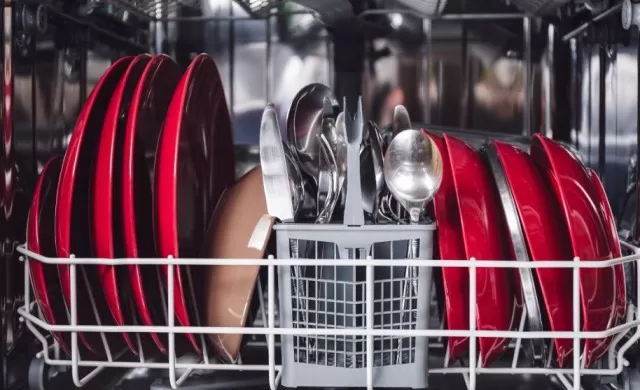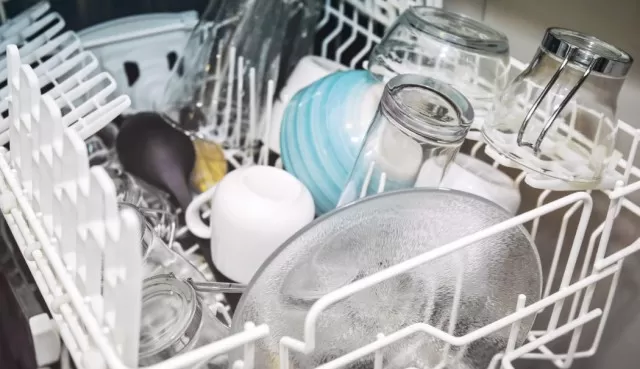Using a dishwasher can be a major time-saver in the kitchen, especially if you have a busy household or frequently host gatherings.
However, it’s important to use it correctly to ensure optimal results.
Simply piling Dirty Dishes into the dishwasher without proper organization can lead to issues such as malfunctioning and leaving water spots and grime on your dishes and cutlery.
Since dishwashers can vary in their design and functionality, what works for one model may not work for another.
However, all dishwashers rely on spray arms to rotate and distribute water during the wash cycle. To ensure a thorough wash and effective drying, it’s crucial to avoid any obstructions that could hinder the water jets from properly reaching the dishes.
Proper spacing is also essential.
By following these guidelines and adapting them to your specific dishwasher model, you can optimize the cleaning efficiency and performance of your dishwasher, resulting in spotless dishes and cutlery.
Correct Method to Load Dishwasher

Familiarize Yourself with Your Dishwasher.
Every dishwasher operates slightly differently, so it’s important to read the manufacturer’s instructions to understand the specific features and settings of your model.
Take note of the location of the jets, the water temperature options, and the recommended type of dishwashing detergent for optimal performance.
Load Only Dishwasher-Safe Items.
Before loading your dishwasher, make sure to remove any leftover food scraps and pre-soak heavily soiled pots and pans.
It’s essential to ensure that the items you place in the dishwasher are dishwasher-safe. Some items, such as antique china, aluminum, cast iron, brass, tin, bronze, nonstick cookware, wooden utensils, and certain plastics, should be washed by hand to avoid damage.
When in doubt, it’s safer to handwash these items instead.
Load Dishes in an Organized Manner.
The arrangement of items inside the dishwasher can impact the effectiveness of the cleaning process.
To achieve the best results, load the dishes in an orderly fashion. Place the dirty side of the dishes facing downward and angled towards the center of the dishwasher, as the jets spray water upwards.
Avoid overcrowding the dishwasher to allow water to reach all surfaces and ensure proper drainage.

Here’s a suggested dish placement for optimal cleaning:
Glasses and Plastic Containers: Place glasses, cups, small bowls, and dishwasher-safe plastics on the upper rack.
Load them facing downward since the spray arms shoot water upwards.
Utensils: Load long utensils, such as spatulas and serving spoons, on the side of the upper rack.
Silverware: All silverware should be placed in the utensil basket.
For safety purposes, position knives with the handle up. Mix forks and spoons in each compartment of the basket to prevent nesting or sticking.
Pots, Pans, Plates, and Bowls: Arrange larger items like pots, pans, serving bowls, plates, and other cookware on the bottom rack.
Place them at the back and along the sides to allow water to flow freely. Bowls should be loaded face-down.
If you have heavily soiled items, it’s recommended to place them in the bottom rack, as the water pressure is slightly higher in that area for more effective cleaning.
Choose the Right Dishwashing Detergent.
Selecting the appropriate dishwashing detergent is crucial for optimal cleaning performance.
Refer to the manufacturer’s instructions to determine the best detergent type for your dishwasher. Tablets, powders, and liquids are available options, but avoid using regular dish soaps as they can harm the dishwasher.
Unload the Dishwasher from Bottom to Top.
When it’s time to unload the dishwasher, start with the bottom rack and work your way up to the top rack.
This order prevents any residual water from items in the top rack from dripping onto the clean dishes below.
Additional Tips for Loading a Dishwasher

To help you make the most of your dishwasher and achieve excellent results, here are some tips:
Ensure that no obstructions are blocking the spray arms, as this can hinder the cleaning process.
If your dishes consistently come out dirty, try reducing the number of dishes loaded per cycle to ensure proper water and soap circulation. Regularly clean your dishwasher by using a dishwasher cleaner at least once a month.
Clean the dishwasher filter every three to six months to prevent clogs and maintain optimal performance. Run a cycle with apple cider vinegar or distilled White Vinegar every few months to eliminate stains and odors.
Consider using a water softener if your home has hard water, as it can improve the dishwasher’s cleaning effectiveness. By following these tips and maintaining your dishwasher, you can ensure that your dishes come out clean and sparkling after every wash.
*The information is for reference only.